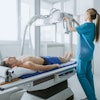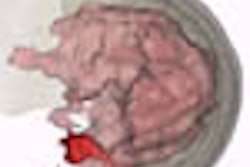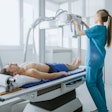
SALT LAKE CITY - Panoramic radiography isn't just for dental offices anymore; it's being used in hospital emergency rooms to evaluate possible mandibular fractures. As part of the ER complement of modalities, panoramic radiography needs to be digital (to integrate into a PACS) and it needs to be fast.
Dr. Allan Farman, professor of radiology and imaging sciences in the department of surgical and hospital dentistry at the University of Louisville in Louisville, KY, presented the results of a head-to-head comparison between charge-coupled device (CCD), storage phosphor, and film-based panoramic radiography at SCAR on Friday.
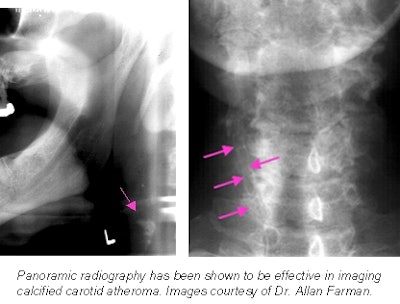 |
Dr. Farman and his colleague, Dr. Taeko Farman, tested a prototype OP 100D CCD from Instrumentarium Imaging (Tuusula, Finland), a DigiPan CCD from Trex/Trophy (Marne-la-Vallee, France), a DenOptix storage-phosphor system from Dentsply/Gendex (Des Plaines, IL) using Fujifilm Medical Systems computed radiography plates, and a T-Mat G film system from Eastman Kodak Health Imaging (Rochester, NY).
The researchers used each device to compare the image layer characteristics, comparative radiation dose requirements, and convenience of use of panoramic radiography. The image layer contours were determined at resolution limits of 6, 5, 4, 3, and 1.5 line pairs (lp) per millimeter using two different resolution test patterns.
According to Farman, maximum spatial resolution for images made using T-Mat G film with Lanex Regular screens exceeded 5 lp/mm film, but did not exceed 6 lp/mm -- as did the OP 100 D CCD and the DenOptix storage-phosphor system. However, the DigiPan CCD achieved 4.37 lp/mm but did not exceed 4.86 lp/mm.
Using the 1.5 lp/mm resolution limits, the research duo discovered the focal-trough limits in the midline were 14 mm for the DigiPan, 17 mm for film, 23 mm for the DenOptix, and 20 mm for the OP 100 D. In the posterior dental-arch segment the focal trough width was 43 mm for the DigiPan, 44 mm for film, 65 mm for the DenOptix, and 71 mm for the OP 100 D.
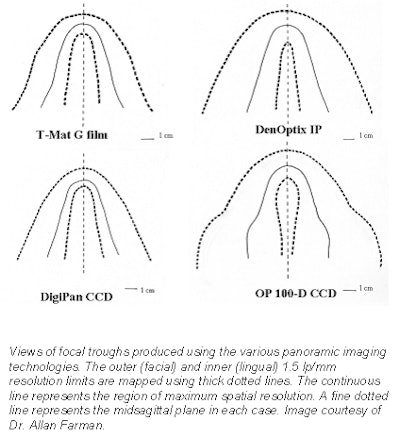 |
The researchers used the radiation exposure for film as a baseline for the dose levels required to achieve comparable images on the digital technologies. The DigiPan CCD permitted image acquisition with a 70% dose savings, the DenOptix required a 25% dose increase, and the prototype OP 100 D had a 50% dose increase over film.
The team found that when speed is of the essence, the CCD-based systems were the quickest, at 2 minutes from start of scan to viewing. Film clocked a 4-minute rate from inception of scan to production of developed film. However, the storage-phosphor technology took a disappointing 6-plus minutes to achieve an image.
Farman attributed the slow speed of the storage-phosphor system to the manual unpacking of the storage-phosphor plate in a semi-darkened room before it can be scanned. He also noted that the drum scanner could develop only one plate at a time, significantly decreasing image throughput when compared to film or CCD technologies.
By Jonathan S. Batchelor
AuntMinnie.com staff writer
May 5, 2001
Related Reading
Del gets FDA clearance for Villa R/F systems, May 30, 2000
Copyright © 2001 AuntMinnie.com


